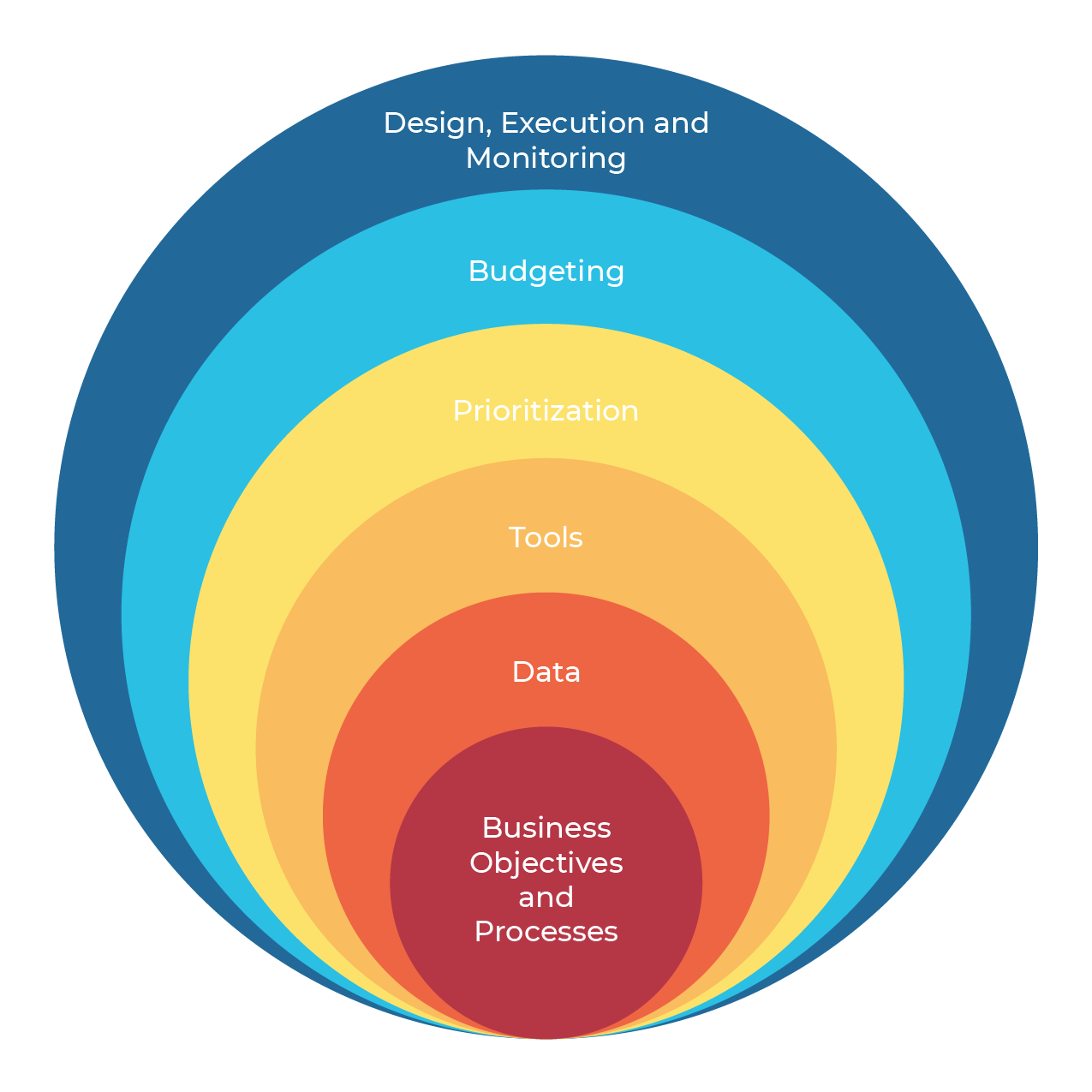We made it!!! 15 Posts, nearly 4 months and we are at the final “Peeling the Onion” post. In hindsight, the series title is actually a bit of a misnomer as we actually started with the core of the onion and worked our way out. However, I don’t know how to re-layer an onion, and it sounds kind of strange.
A few key points to wrap up this marathon we have been on together. First, although we presented this process in order (from the core out), it is anything but linear. Oftentimes an organization with bounce from one layer to another and then back again a few times over the course of their annual planning journey. As you iterate through the framework, it is critical that you understand where you are and what you need to focus on as you move from layer to layer.
As my last post noted, it is critical that things don’t end when the project is done. The follow-up and monitoring creates even more data to support the data you already have. This can then be leveraged by the tools and allows you to update and validate your prioritization as you begin to build your new prioritized multiyear plan. The journey never ends.
In a previous iteration, IAMS stood for Integrated Asset Management Solutions. When I founded Roth IAMS, I decided to change it to Integrated Asset Management Strategies. People have asked me why over the years, and I have never had an answer that completely satisfied me. Recently, I had the pleasure of attending an internal facilities summit at a US University. During one of the presentations, the head of campus security made a statement that just clicked in my head.
When speaking of their on-campus security, the Chief said, we decided to stop calling it a solution because the issue never really goes away. We started to call it a strategy because it always is evolving and needs our attention and discipline. As soon as he said it, I realized I finally had the right answer for why we did it.
Implementing the IAM Framework for your organization is not a solution that is going to eliminate your DCRM. Rather, it is a strategy that you have to constantly adjust and evolve as your circumstances change. Thanks for sticking with me to the end! I hope that this blog series has provided you with ideas and insights that you, your team and your organization can join us on the journey of Solving the World’s Deferred Capital Renewal and Maintenance Backlog Crisis!!!




